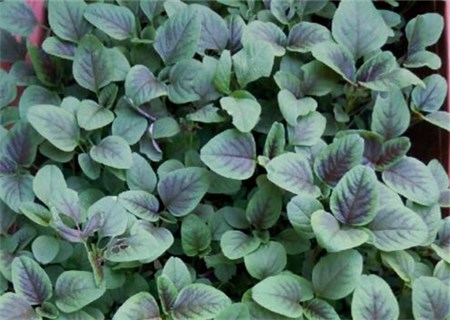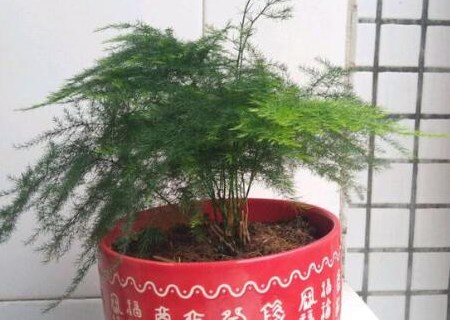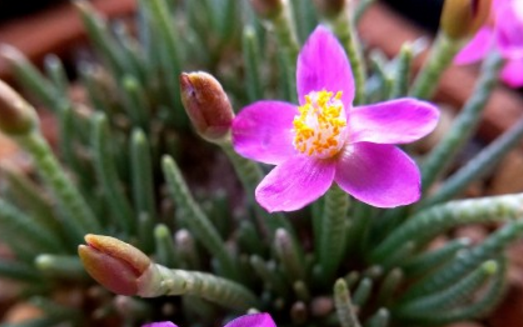What are the planting methods of amaranth seeds alias Yanlai Hong? Why is it red when fried? What's the advantage?
Amaranth is an indispensable ingredient on the table in summer, and its delicious red color greatly increases people's appetite. with the increasing market demand, more and more farmers grow amaranth. So do you know the planting methods of amaranth seeds? Why is it red when fried? What's the advantage?

1. Planting methods of amaranth seeds
1. Soil preparation and fertilization
Amaranth is not strict on soil, but it is suitable for alkaline soil. Although amaranth has certain drought resistance, it grows poorly in fields with poor drainage. Plots with flat terrain, convenient drainage and irrigation and few weeds should be selected to make flat beds. The seeds of amaranth are small and must be carefully prepared so that the soil is fine to facilitate seedling emergence. Amaranth likes fertilizer, apply high-quality rotten human feces and urine 1500kg before soil preparation, and then make ridges or beds. The sowing rate varies with the sowing time, and the earlier the sowing time is, the more seeds are used. The sowing rate of 4~5kg/667 grain in early spring can be sowed or sowed, and the soil is covered with 0.5-1cm after sowing.
2. Topdressing and watering
The emergence of seedlings is relatively late when sowing in early spring, which takes 7 to 12 days. The first topdressing could be carried out in the 3 ~ 5 leaf stage, the second topdressing was carried out 12 days after topdressing urea 10 kg per 667 mu, the third topdressing was carried out after the first harvest, and once per harvest, and the dilute liquid fertilizer dominated by nitrogen fertilizer was used in each topdressing. If quick-acting nitrogen fertilizer is applied, it can be combined with watering, but spring sowing should be watered less.
3. Ploughing and pruning
Weeding should be carried out in time during the seedling growth period, so as not to affect the growth of amaranth seedlings. Amaranth harvested many times should be pruned, and 2-3 nodes were left at the base of the main branch after harvest to promote the germination of lateral branches and increase the yield.
4. Pest control
The disease resistance of amaranth is strong, and the main disease is white rust, which can be controlled by strychnine or mancozeb. The main pest is aphid, which can be controlled by imidacloprid or aphid spray.
5. Timely harvest
Amaranth is sown and harvested in batches. The first harvest is mostly combined with inter-seedling, generally at 40-45 days after sowing, when the seedling is 10-12cm high and has 5-6 leaves, the interplant is harvested one after another, mastering the principle of large harvest and small seedling and uniform seedling, so as to increase the yield in the later stage. Topdressing in time after harvest. Amaranth mainly feeds on tender leaves, so it should be harvested in time, otherwise the fiber will increase and the quality will decrease. In general, the output can reach 1000~1500kg.
Why is the fried amaranth red?
Amaranth contains a natural pigment called amaranth, which is found in cellular vacuoles. The chloroplast in the cell is green, because the content is high, so green masks red, and the raw amaranth is dark green. As mentioned above, heat destroys cell membranes and walls, disintegrates chloroplasts, destroys the structure of chlorophyll, and exudates red in vacuoles.
What are the benefits of eating amaranth
The main results are as follows: 1. Heat-clearing and detoxification, clear eye and pharynx amaranth, sweet and cool taste, longer than clear and damp-heat, clear liver and detoxification, cool blood and dissipate blood stasis, which has a certain auxiliary therapeutic effect on red and white dysentery caused by damp-heat, red eye pain caused by inflammation of liver fire, red and swollen throat and so on.
2. Rich in nutrition, amaranth is rich in protein and fat. The protein contained in sugars and a variety of vitamins and minerals can be fully absorbed by the human body than milk, and the content of carotene is more than 2 times higher than that of eggplant fruits, which can provide rich nutrients for the human body, which is conducive to strengthening the body and improving the immunity of the body. it is known as "longevity dish".
3. The content of iron in amaranth is twice as much as that in spinach, and the content of calcium in amaranth is 3 times higher than that in spinach. More importantly, amaranth does not contain oxalic acid, and the calcium and iron contained in it can be easily absorbed into the body. Therefore, amaranth can promote the growth and development of children and has a certain value of dietotherapy for fracture healing.
Time: 2019-03-15 Click:
- Prev

What should asparagus culture pay attention to? Can you put it in the bedroom? How to fertilize?
Asparagus is a very high ornamental plant, which can be placed in the living room and study to add bookish flavor to the living room. So do you know what you should pay attention to in asparagus culture? Can you put it in the bedroom? How to apply fertilizer? What should be paid attention to in asparagus culture? 1. Change the pot soil and change the flowerpot every one to two years. If you don't change the pot.
- Next

White flower tenderness brocade family culture and maintenance skills? How to change the pot and transplant? What if it doesn't blossom?
White blossom brocade is commonly known as Artemisia angustifolia, so family breeding and maintenance skills? How to change the pot and transplant? What if it doesn't blossom? According to the data, Baihua Leunjin is a genus of Portulaca oleraceae. Desert regions native to South Africa and Namibia, preferring cool, dry and sunny environments, resistant to drought and semi-shade
Related
- Fuxing push coffee new agricultural production and marketing class: lack of small-scale processing plants
- Jujube rice field leisure farm deep ploughing Yilan for five years to create a space for organic food and play
- Nongyu Farm-A trial of organic papaya for brave women with advanced technology
- Four points for attention in the prevention and control of diseases and insect pests of edible fungi
- How to add nutrient solution to Edible Fungi
- Is there any good way to control edible fungus mites?
- Open Inoculation Technology of Edible Fungi
- Is there any clever way to use fertilizer for edible fungus in winter?
- What agents are used to kill the pathogens of edible fungi in the mushroom shed?
- Rapid drying of Edible Fungi

